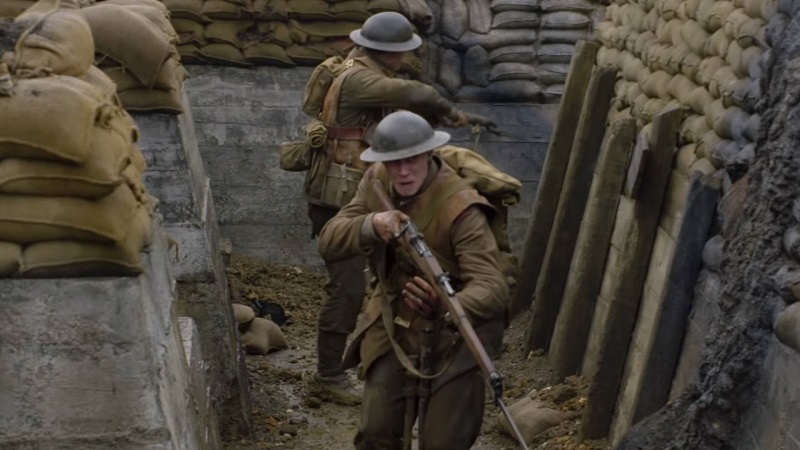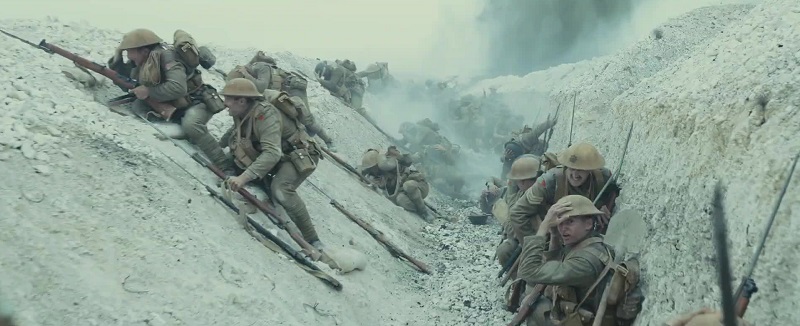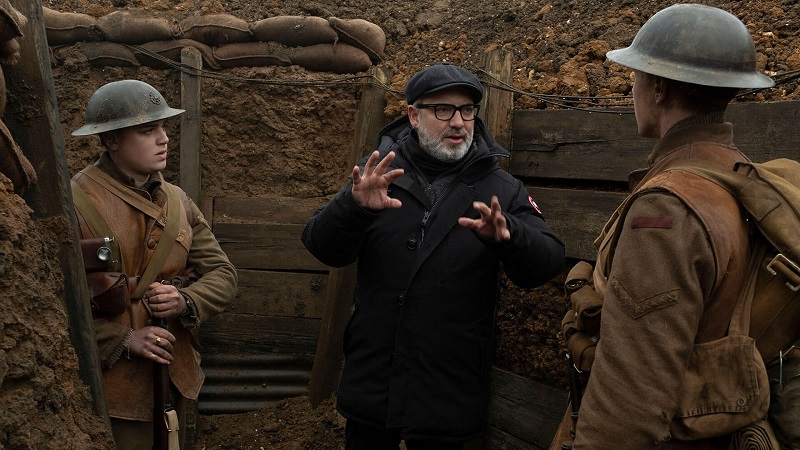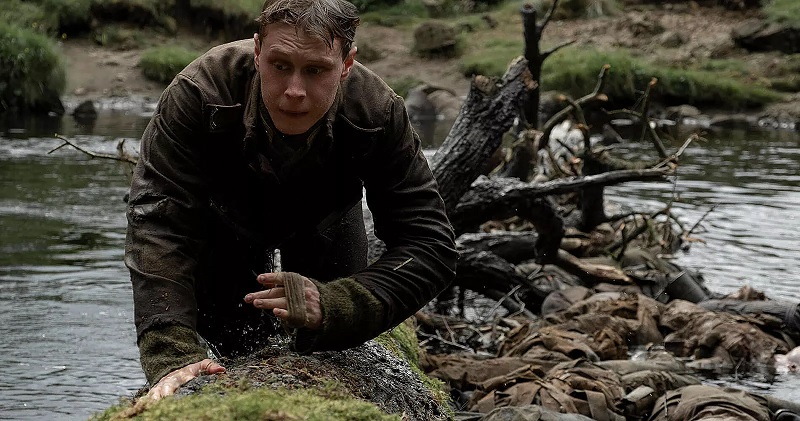As The Movie Mensch’s Oscar Watch stated—before Academy Awards nominations were even announced—the race this year is down to 1917 and Once Upon a Time in Hollywood. This is not an endorsement of Sam Mendes’ epic World War I for Tinsel Town’s top prize. What this latest Oscar Watch column serves is to exemplify why it is imperative that every human being of a certain age witness the story of Lance Corporals Blake (Dean-Charles Chapman) and Shoefield (George MacKay).

1917 is a history lesson in perseverance, sacrifice and heroism that utilizes a filmmaking “gimmick” to tell a story. It is firmly through that single-shot method of movie creation that Mendes has hooked our hearts as two young British soldiers are tasked with no greater mission than stopping an attack that intelligence has revealed to be a trap. Otherwise, 1,600 men will be slaughtered, including Blake’s brother. Blake and Shoefield must traverse the trench system—that might as well be a maze filled with battle weary and ready soldiers—and go straight through No-Man’s land, enter and go through the German’s “supposedly” abandoned trenches and bunkers … and so much more with the faintest of hope that they can arrive through all of that by morning to cease an offensive that is a fatal folly.
With this tale’s innate set-up, the experience of the World War I soldier is exposed in all its raw reality. This was the first generation of warriors who were going up against weapons that had exponentially advanced technologically in their manner and efficiency of killing. The only solution was to pour more men into the war machine that was laying to waste an entire generation. The life of trench warfare is featured in Mendes’ film, but like everything else within this landscape, it is not highlighted beyond simply showing it in all its hell. Rats were everywhere, along with disease, a shortage of food and a military medical staff that could not keep up with the carnage. Then, there was the ever-present fear of chemical weapon attacks that had a way of making a claustrophobic sense of mass soldiers in a tiny living space even more heightened.
The great sacrifices of horses is subtly displayed, also without a word ever mentioned about the species that gave so much of themselves for humankind–beyond war’s horrific environment. In 1917, their corpses are everywhere, literally littering the landscape. Perhaps I’m more sensitive to the sights of the equine ultimate sacrifice after stumbling on the Animals in War Memorial in London’s Hyde Park. Their sacrifice is detailed in powerful ways. Clearly Mendes sought to pay tribute in his own way with how horses would appear in 1917.
These men arrived for battle as boys and were men before too many months of a calendar could be changed over. As we meet Schofield and Blake, they are awaking from a prairie-set nap. Blake has been summoned and tasked with choosing one man to bring along. Of course, he chooses his mate, Schofield. Mendes and his co-screenwriter Krysty Wilson-Cairns impeccably capture what they witnessed. The horrors were beyond what the human psyche could process at that time in our species’ psychological history. That fact was also stunningly illustrated in Peter Jackson’s highly emotive They Shall Not Grow Old. Making their psyche injuries worse, as shown in Jackson’s 2019 documentary, these returning men were shunned for speaking about the war once they got home.

Blake and Shoefield make their way, ever forward as soldiers possessed by their mission and its execution. This has the potential to serve as some good news shared by these Corporals in a daily existence that had none. The duo cross craters filled with floating bodies. This, after passing through deceased-horse laden fields whose topography had been churned by the raging violence of war—unrecognizable as anything other than one of the levels of hell itself. Barbed wire permeates our field of vision, as its victims routinely hang, waving lifelessly from a passing wind gust.
Mendes’ filmmaking foray, this time out, has never felt more personal. The film is loosely based on a story his grandfather used to tell about being tasked with a mission. The filmmaker’s family heard snippets of the story, but never the entire endeavor. Grandfather would stop, overcome with emotion and never mention it again for another several years. This is not the Mendes patriarch’s story. It’s clearly inspired by that and the salute, the love, the appreciation is all there on every frame—and so much more. The sacrifice of World War I soldiers need not disappear with the last of their numbers. Films such as 1917 ensure their legacy can last forever.

Tapping cinematographer extraordinaire Roger Deakins aided in the visual and storytelling emotional weaponry that Mendes wielded with 1917. It’s cliché, but yes, an image is worth a thousand words. If emotions are already running high from cinematic characterizations and collective experiences, then an image framed by Deakins will send the emotive into overdrive. Then, there’s the single shot choice of Mendes to give us the feeling that the entire film was captured in one long take. It’s a powerful piece of artistry as used in this milieu. It forced the filmmakers to think about what they were trying to say and how that could be captured from where the camera was and where it must go.
The score is tight, efficient and music meant to equally raise emotions and the hair on the back of your neck. The flick’s most powerful musical moment—teased in the 1917 trailer—arrives at the most haunting and pivotal of moments. A sole male soldier (Jos Slovick) tenderly belts out Wayfaring Stranger that literally stops every single soul in their tracks. Soldiers stop marching, that single shot camera stops moving and for one brief shining moment, the miracle of humanity replaces the terrors of its darkest corners.

1917 needs to be seen on the big screen for a multitude of reasons, not the least of which is to share the heroic, soaked in brotherhood, mission of two men who remind us of the cost and priceless nature of the sanctity of life. That is something that is innately compelling, yet if shared with fellow human beings, it exponentially manifests a significantly higher level of resonance.

